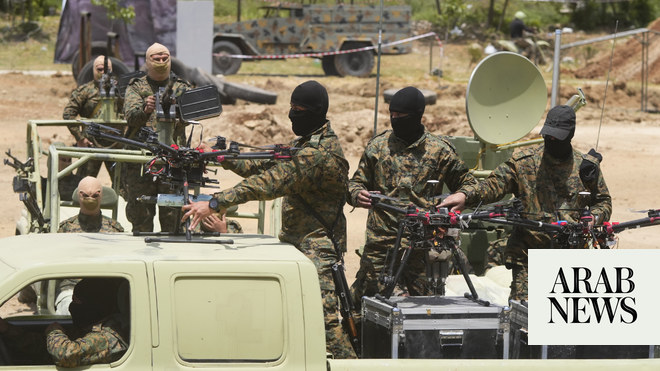CAIRO: Clashes between two heavily armed militia groups in the Libyan capital have terrified residents and killed about a dozen people, the latest outbreak of violence in the largely lawless North African nation, authorities said Saturday.
The hours-long clashes, involving the use of heavy weapons, took place on Friday in Tripoli's eastern Tajoura neighborhood between the Rahba Al-Duruae militia, led by warlord Bashir Khalfallah, known as Al-Baqrah, and another militia, Al-Shahida Sabriya, the officials added.
At least nine people were killed and 16 others injured in the hours-long clashes, according to the Health Ministry's ambulance and emergency services.
According to local media, the clashes stemmed from an attempted assassination of Al-Baqrah on Friday, which his militia blamed on Al-Shahida Sabriya.
Khaled Al-Meshry, the newly elected head of the Western-based High Council of State, condemned the assassination attempt and called for an investigation to bring those responsible to justice.
The warring parties are allied with the government of Prime Minister Abdul Hamid Dbeibah. His spokesman did not respond to a request for comment.
The United Nations mission in Libya on Saturday deplored the clashes, the use of heavy weapons in densely populated areas and a military buildup in and around the capital.
“These clashes serve as a reminder of the critical need to unify the military and security apparatus, creating legitimate and accountable institutions,” he said in a statement. “They also underscore the urgent need to accelerate an inclusive political process leading to credible elections.”
The violence has underscored the fragility of war-torn Libya since the 2011 uprising turned civil war that toppled and later killed longtime dictator Muammar Gaddafi. Amid the chaos, militias have grown in wealth and power, particularly in Tripoli and the western part of the country.
Libya has been divided for years between rival administrations in the east and west, each supported by armed groups and foreign governments. It is currently governed by the Dbeibah government in Tripoli and the administration of Prime Minister Osama Hammad in the east.
Western Libya is controlled by a series of outlaw militias allied with Dbeibah's government, while the forces of powerful military commander Khalifa Haftar control the eastern and southern parts of the country.
Friday's clashes between militias were the latest in a series of clashes between militias competing for influence in the western part of the country.
In May, clashes between militias rocked the coastal city of Zawiya, trapping families in their homes, killing at least one person and wounding 22 others. And in August last year, a 24-hour period of fighting between rival militias in Tripoli killed at least 45 people.
The clashes in the capital came as Haftar's forces said they had deployed troops to southwestern areas to secure Libya's southern borders. The deployment prompted militias in western Libya to mobilize amid growing concerns of a potential new war between eastern and western Libya.
The United Nations mission and Western embassies in Libya have expressed concern that the military move could spiral into an all-out war between Haftar’s forces and Western-based militias, four years after a ceasefire deal ended a 14-month war between the two sides.
“Such movements risk provoking an escalation and violent confrontation and could jeopardize the 2020 ceasefire,” read a joint statement from the embassies of France, Germany, Italy, the United Kingdom and the United States.
